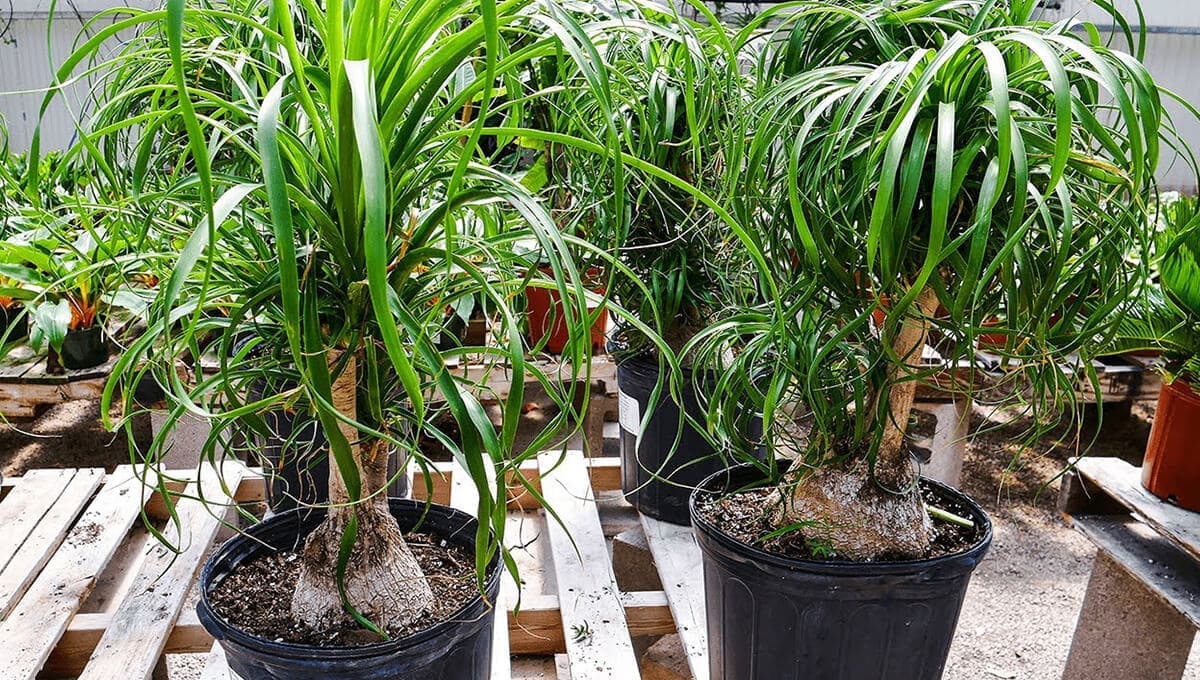Ponytail palms the plants which completes your home. If you are looking for a houseplant, which has very few requirements then, this plant will match your needs. Let us know more about how to grow these eye-catching ponytail palms.
Short Description
Ponytail palms need bright indoor light, so plant them at a spot where they get plenty of sun light daily. You can also put them outside.
Plant your ponytail palms in Plantic Potting Mix, containing organic compost and essentials needed for plant growth.
Just after plantation, give your plants their favourite mulch - Plantic Organic Seed-Starter! Plant Food Liquid Fertilizer - specially formulated for starter plants, promote rapid rooting and growth.
When you look the top 3 inches of soil dry then, water them thoroughly.
A month after plantation, feed your plants with Plantic Organic GreenDrop! Plant Food Liquid Fertilizer - nutrition granules which promote growth and greening.
To grow more ponytail palms, remove them from their parent plant and re-pot.
What if we say this ponytail palm are not “palms”. Yes, ponytail palms are succulent- they are part of the agave family, but their leaves are rough to touch, less stiff and thorny than usual expected agave. Ponytail plants have a wide, greyish base with cracking bark that’s why they are sometimes called elephant foot trees. Each ponytail palm has a graceful trunk, tapers up to a slender one which is why they are commonly called bottle palm. These beautiful plants can grow up to 20 feet with very little need - well-drained soil and sunny spots.
Now let’s go through each step briefly.
Which Spot Is Best For Ponytail Palms?
Ponytails palms need bright indoor light, so it’s better to choose a spot in your home where they can get plenty of sunlight or place them near a window. But do not put them under direct sunlight. These plants are best for indoors and low humidity regions because they can tolerate dry conditions well.
Also, give your indoor ponytail plants a little break by placing them outside during the summer. Relocate your plants for a few days to acclimate by putting them in a protective area, like porch or patio. Then, move them outdoors, if needed, where they can - get indirect light (because direct sunlight is much stronger than indirect that can harm the plants health which used to grow indoors).
Plant Your Ponytail Palms.
Ponytail palms love to sit in a little crowded area, so plant them in a container which is no more than 2 inches wider all around than the plant base. Make sure the potting container has enough drainage holes. Use a rich compost or soil for your container - Plantic Potting Mix is best suitable for all types of potted plants - infused with organic extracts for better plant growth. Fill the container 1/3 with a potting mix and dig a hole for plantation. Place the ponytail palms in the container so, that the bottom of the stem is about one inch below the container rim. Make sure, to not bury any part of the stem because it can make the plant rot. Now, fill in around the soil with more potting mix. After plantation, water your plants thoroughly and then, move them where you would like to grow.
When & How Much To Water Ponytail Palms?
Ponytail palms are succulents, which can survive for a long time without water. But that doesn’t mean, you need not water them. Also, don’t overwater them. Before you water again after a period be sure the top 2-3 inches of soil is dry and then give the plants a good drink. For indoor ponytail palms, water them after every 3 to 4 weeks. If you have planted the ponytail palms outside in summer. Then, move them under covers, if several inches of rain predicted in your area. Make sure to keep an eye on plants, do not allow plants to sit in standing water.
How To Feed Your Ponytail Palms?
After planting your little starter ponytail palms, feed them with Plantic Organic Seed-Starter Plant Food Liquid Fertilizer. It provides the perfect number of nutrients to your plants and helps succulent to spread its root rapidly. Drench the soil with a mixture of 5 ml of liquid fertilizer and 1 litre of water.
After one month of the plantation, give your plants a boost of Plantic Organic GreenDrop! Plant Food Liquid Fertilizer. It contains natural nutrients and minerals; especially for young plants to promote quick growth and greening.
You can also use Plantic Water Soluble All-in-One Plant Food, or Plantic All-in-One Plant Food Liquid Fertilizer - formulated for all types of plants and support at each growth stage.
How To Prune Your Ponytail Palms?
Usually, you don’t need to prune ponytail palms. They are slow growers, and when they grow, they don’t need prune. But, if you want to stimulate multiple trunks, you can cut the growing tip and allow your plants to re-sprout. Around the outside of the cut edge, little stems will begin to grow.
How To Grow More Ponytail Palms?
Ponytail palms sometimes produce baby plants or offsets at the bottom of the stem. If you want to produce more, you can cut these offsets and replant them. Keep the cut sides dry out for a few days, then pot them again. Be sure, to not bury the stems.
It’s sure these tips help you out to grow this pretty plant indoor and make you enjoy its captivating essence. If you are a beginner then, ponytail palms will be the best choice for you. So, start today, just give them a little care, indirect light, water, and most importantly feed them with Plantic Organic Food. Check out more about Plantic.

